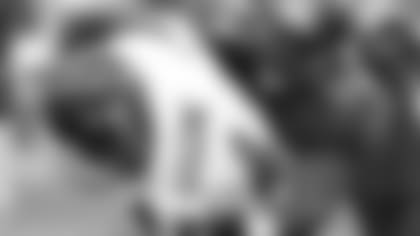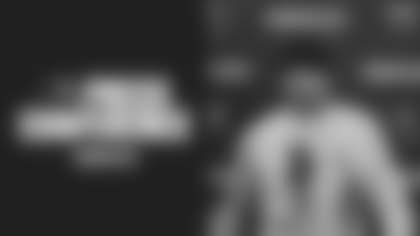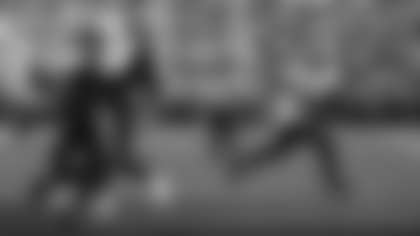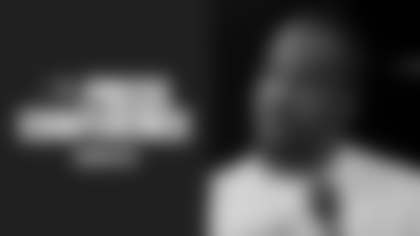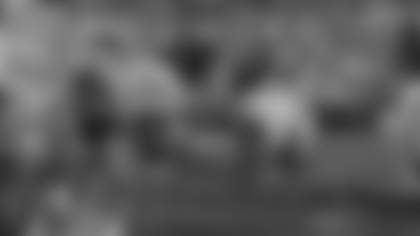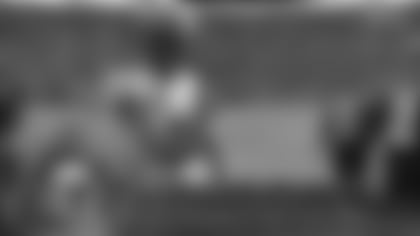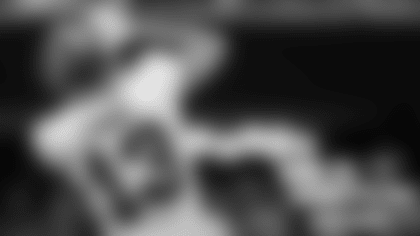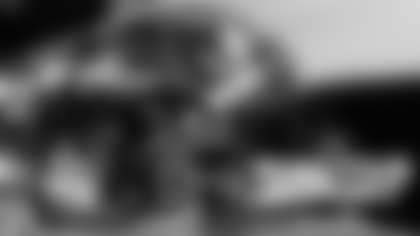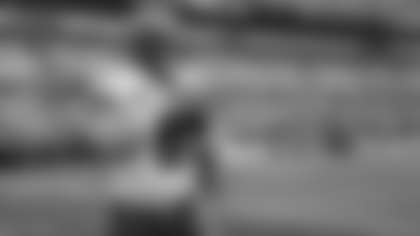As DE Greg Spires proved two summers ago, a strong training camp performance can lead to a critical regular-season role
Heading into the 2002 season, the story line concerning the Tampa Bay Buccaneers' defensive line was clear. A rare surplus of talent was going to allow the team to start a four-man front made up entirely of first-round draft choices, all of whom had proven to be successful on the NFL level.
Simeon Rice, Warren Sapp, Anthony McFarland and Marcus Jones…a modern-day Fearsome Foursome in the making.
Except it didn't work out that way.
Oh, the Bucs racked up 43 sacks and helped pressure opposing passers into 31 interceptions, and the team eventually won Super Bowl XXXVII. So it worked out. But the four number-ones never took the field together.
A stellar performance in training camp by a free agent signee by the name of Greg Spires unseated Jones from the left end spot. Jones eventually suffered a preseason injury and never again played a snap for the Buccaneers. Spires impressed the coaching staff with his gritty, technically-sound effort and was one of the team's surprising contributors throughout the season and right through the Super Bowl.
Spires' story is just one example of how quickly a player's fortune can change when he makes a good impression in training camp. After going to New England in the third round of the 1999 draft, Spires spent four up-and-down seasons with the Patriots and the Cleveland Browns before signing on with Tampa Bay in the spring of 2002. It was a deal that didn't draw a lot of media attention at the time but did please the coaching staff.
"He had a lot of intangibles, a lot of the things we look for in a player," said Defensive Line Coach/Assistant Head Coach Rod Marinelli. "We really liked him coming out of Florida State – he had great initial quickness, toughness, and he was just a high, high achiever, and he's played like that for us every week. Once a guy gets here, we really don't care what round he was drafted in. We just care about what he does on the field, his performance."
Will another Spires rise through the depth chart to earn a starting spot this year? That's impossible to predict, but it's worth noting that the competition along the defensive line is likely to be heated and intense once again. If a player exhibits the qualities the coaching staff is after, he will surely be given a chance to perform on the field. And those qualities have nothing to do with a player's draft position or press clippings.
"I really like to see a guy with a motor," Marinelli said. "I want to see on film how much he really cares for the game of football. The ability to run and to hit is obviously important. Quickness of feet and explosiveness is equally important."
Competition at the two defensive tackle spots should be particularly interesting this summer, following Warren Sapp's departure. The Bucs will be finding a new 'under tackle' to replace Sapp and, if that person is Anthony McFarland, a new nose tackle to fill McFarland's old role.
The under tackle position, also referred to as the 'three-technique' by Buc coaches, is vitally important to the Buccaneer defense, and it may come down to a fight between McFarland and fourth-year man Ellis Wyms, the team's versatile secret weapon. The under tackle utilizes quickness to aggressively get off the ball and penetrate into the backfield, thus wreaking havoc and disrupting the offense's timing.
"The under tackle can really put a dagger into the heart of an offense," Marinelli said. "The battle over the three-technique by Wyms and McFarland should be a very good one. We feel we're two deep at under tackle, that we have two very good players. We're just going to let them battle it out."
That leaves Chartric Darby, Cleveland Pinkney and DeVone Claybrooks as the primary competitors at nose tackle, though McFarland and Wyms could also play into the equation. The nose tackle isn't put in a position to make as many 'flash' plays as the under tackle, but it is nonetheless a crucial element in the Buc D. Unlike the under tackle, who plays with some degree of freedom, the nose tackle's role is simple – be stout against the run and take on double teams. Since teams found some success in running the ball 'up the gut' against the Bucs in 2003, whomever emerges as the starting nose tackle will be counted upon heavily to make a difference in 2004.
Simeon Rice, the team's sack leader for three straight years, is a safe bet to hold on to his right end spot. Another heated competition could develop at left end, however, with a pair of promising players pushing Spires, who now plays the role of incumbent. One of the applicants for Spires' job is up-and-coming second-year man Dewayne White. White, drafted in the second round in 2003, got a shot to play late in his rookie season and has made a very strong impression during his second offseason with the team. He will be given the opportunity to push the highly-motivated Spires for playing time, if not the starting job. Spires, who is not likely to relinquish his job without a fight will also be challenged by free agent signee Lamar King, another former first-round pick (Seattle, 1999).
"The left defensive end spot is up for grabs between Spires, White and King," Marinelli confirmed. "I really think Dewayne White has a chance to break out, though. From everything I've seen this offseason, I think he has a chance to really explode on the scene."
Expect the battles along the defensive line to form one of the most interesting and important story lines of training camp…again. Sometime amid three weeks of grueling two-a-days in the oppressive Orlando heat, Buccaneer coaches hope to uncover another gem the likes of Spires in 2002.
"I don't want to predict too far down the line," Marinelli said. "I will predict that when we come to camp, we're going to hustle and we're going to work on fundamentals and we're going to do the right things. The next day, we'll do it all over again, hopefully a little bit better."


